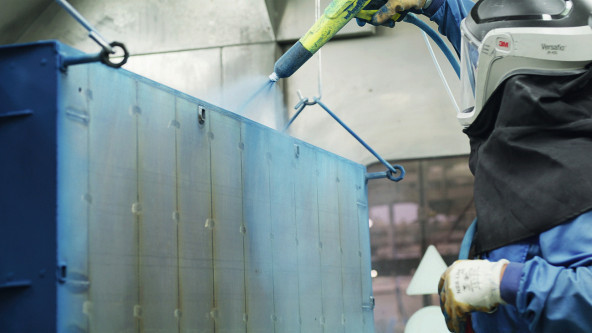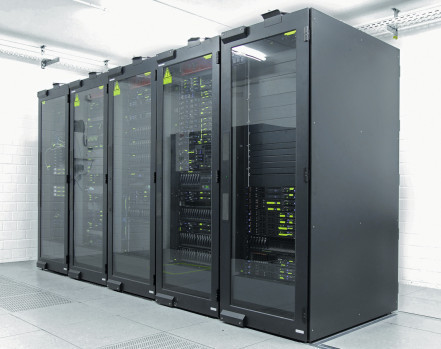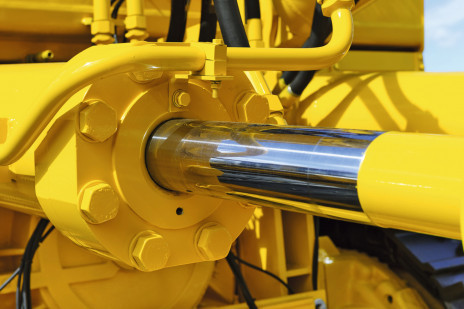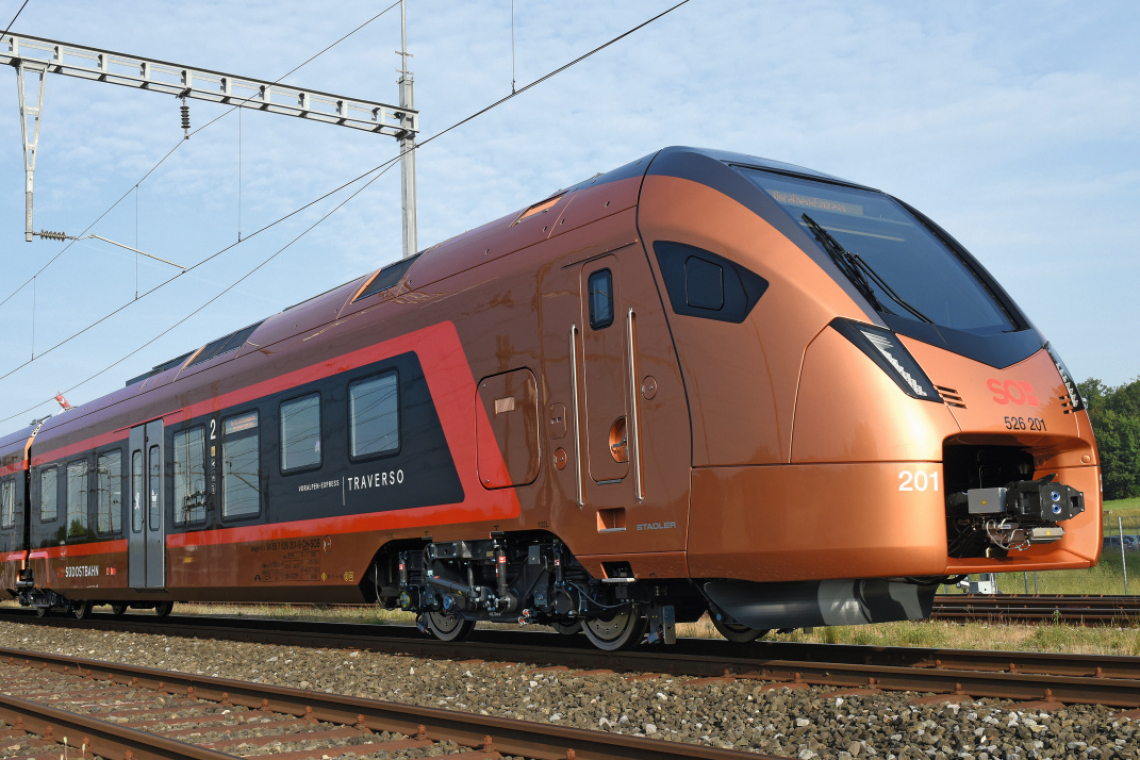In addition to the anodizing process, the wet painting and powder coating processes are two other important pillars of surface technology. The layer structures and sources of influence are present on the surface in a different form compared to the anodizing process. Each surface coating is tailored to the requirements of a component. Whether for decorative applications or special technical requirements, the best possible properties of a coating system can be effectively utilized using a variety of surface coating processes.
Wet painting and powder coating are characterized by two very versatile technologies. In the decor area, the countless possibilities of color design, both in wet painting and powder coating, are a significant factor. By observing the basics of wet painting and powder coating, selecting the right paint material and applying suitable techniques, high-quality surfaces can be achieved with maximum efficiency. This ranges from excellent UV resistance to elasticity or abrasion resistance.
What does a wet paint consist of? Binder
The binder is the main component of the paint film and forms the solid layer on the surface after drying. It binds the other components of the coating together and adheres to the substrate surface. The choice of binder largely determines the mechanical properties of the paint film, such as hardness, elasticity and abrasion resistance.
Solvent
Solvents, such as water or thinner, are used to dilute the binder and other components of the paint and to regulate the viscosity of the paint so that it can be applied more easily. After application, the solvent evaporates and leaves behind the paint film. Water is used as a solvent in water-based paints.
Pigments
Pigments are fine particles that give the paint color and opacity. They are responsible for the visual effect of the paint film and can be used in different colors and concentrations to achieve the desired color intensity.
Fillers
Fillers are used to smooth the surface, fill imperfections and improve the adhesion of the paint film. They can consist of various materials such as calcium carbonate, talc or silica and are added depending on the requirements.
Additives
Additives are additives that can serve various purposes, such as improving the flow properties of the coating, controlling the drying time, preventing skin formation or blistering, increasing UV resistance or improving scratch resistance.
The right combination and dosage of these coating components is crucial for the quality, durability and performance of the coating. By selecting suitable binders, pigments, fillers and additives, the paint manufacturer can control the desired properties of the paint film and adapt it to the specific requirements of the respective area of application.
Basics of wet coating
Wet painting is a process in which liquid paint is applied to a surface in order to protect, decorate or refine it. The paint is applied using various methods, usually by spraying or dipping. An even and consistent paint finish is crucial for a high-quality result. Different paints offer different properties such as gloss, hardness, weather resistance and color. It is important to select the paint according to the requirements of the project and the desired end results. The be-all and end-all of any coating is the pre-treatment of the surfaces. A clean, grease and oil-free surface before coating is a prerequisite for a high-quality finish.
Surface preparation:
Surface preparation is a critical step in the wet coating process. Any impurities such as dust, grease or rust must be thoroughly removed to ensure optimum adhesion of the paint film. This can be done by cleaning, sanding or other chemical surface treatments, such as passivation for aluminum or steel.
Application techniques:
There are various application techniques in wet painting, including spray guns, airless spraying systems and dipping methods. Each technique has its own advantages and disadvantages in terms of painting speed, surface quality and material consumption. Choosing the right technique depends on various factors such as the type of substrate, the size of the area to be painted and the desired results. When wet painting, it is important to consider environmental aspects. This includes selecting environmentally friendly paint materials, reducing solvent and VOC emissions, and properly disposing of paint waste. By implementing environmentally friendly practices, the environmental impact of the wet painting process can be minimized. Wet painting process technology involves a series of steps that must be carried out carefully in order to achieve high-quality results. The individual steps in the wet painting process are described in more detail here.
The "wet-on-wet" painting process refers to the fact that new layers of paint are applied while the previous layer is still wet or partially dry. This allows for better integration and bonding between successive coats. The wet-on-wet process requires some practice and experience to determine the right time to apply subsequent coats of paint. However, it can result in a smoother and more even finish as the coats bond better and any unevenness is minimized. If work is not carried out "wet-on-wet", the surface is usually sanded between the process steps. Sanding between the painting steps is crucial to generate a smooth surface and improve the adhesion of the paint layers. For this purpose, the painted surface is treated with sandpaper. The type of sanding media is adapted to the requirements of the paintwork. The right abrasive is selected depending on the type of paint and surface condition. Finer sandpaper is used to sand an already painted surface, while coarser sandpaper is used to remove paint residue or to smooth out unevenness. After sanding, the surface is thoroughly cleaned again to remove sanding dust and dirt. This is important to ensure that no particles interfere with the painting process. Flash-off and drying times and curing parameters must always be observed. These can be found in the paint manufacturer's data sheets.
The degreasing and cleaning process sequence
The surface must be carefully prepared before the painting process. This includes cleaning, degreasing and, if necessary, removing rust or other contaminants. Thorough surface preparation is crucial to ensure optimum adhesion of the paint film.
Priming
In some cases, it is necessary to apply a primer to improve the adhesion of the paint, seal the surface or provide corrosion protection. Choosing the right primer depends on various factors such as the substrate material and the specific requirements of the project.
Filler/Filler
In some cases it is necessary to use filler and/or primer. This is used to even out unevenness on surfaces. The filler is applied in an even layer to the previously sanded surface. Unevenness and holes are filled in. It is important to apply the filler evenly and thinly to facilitate subsequent sanding. The filler must dry completely before proceeding to the next step. The drying time may vary depending on the type of filler and is indicated on the product packaging.
After the filler has dried completely, the filled area is lightly sanded again to achieve a smooth surface. Care should be taken not to damage the surrounding area. After sanding, the surface is thoroughly cleaned and degreased again to remove dust and dirt and to ensure optimum adhesion of the paint. Once the surface has been prepared, a primer is applied to create an even surface and allow the paint to adhere better.
Paint application
The paint is applied to the surface using various methods such as spraying or dipping. Spraying is the most commonly used method as it allows for an even and consistent coating. Spray guns are used to finely atomize the paint and apply it to the surface.
The process technique of wet painting requires expertise, experience and precise control to achieve high-quality results. By carefully performing each step and paying attention to the specific requirements of each project, manufacturers can ensure that their painted surfaces have the desired properties and meet the required standards. There are different types of paint systems that can be selected depending on the requirements of the project and the specific properties of the desired end product.
1K paint systems (one-component paint systems):
These paints consist of a single component and cure by air drying or by reacting with moisture. They are easy to apply and do not require mixing with other components. However, 1-component paint systems are generally less resistant to chemicals and weathering than multi-component paints.
2K paint systems (two-component paint systems):
In 2K paint systems, two components, usually paint and hardener, are mixed immediately before the painting process. These paints offer improved durability, resistance to chemicals and weathering as well as faster drying and curing times compared to 1K paint systems. However, they are more complex to apply and require careful mixing and handling.
Water-based paints
Water-based paints contain water as a solvent instead of organic solvents as in conventional paints. They are more environmentally friendly as they emit fewer volatile organic compounds (VOCs), while still offering good paint performance and durability. Water-based paints are often used in areas where VOC emissions are regulated or where environmentally friendly painting is preferred.
UV-curing coatings
UV-curable coatings cure by UV irradiation and offer a fast drying and curing time. They are often used in applications where high productivity and short throughput times are required, e.g. in the printing industry for coating packaging or in the automotive sector.
KTL
KTL coating stands for "cathodic dip coating". This is a process for coating metallic surfaces that is frequently used in the automotive industry and other sectors. In cathodic dip coating, the part to be coated is immersed in an electrophoretic coating solution, whereby a DC voltage is applied. This process deposits the paint particles evenly on the surface of the part and forms a durable protective layer against corrosion and other environmental influences. Even undercuts and component areas that are difficult to access during painting can be coated evenly using CDP coating. KTL coating offers high quality, good adhesion and a uniform coating, making it a popular choice for many industrial applications.
Curing
After drying, the coating must cure to achieve its final properties such as hardness, gloss and durability. Curing can be done by air drying, heat treatment or UV irradiation, depending on the properties of the coating material.
Quality control
Once the painting process is complete, it is important to carry out quality control to ensure that the paint finish meets the desired standards. This may include visual inspections, paint film thickness or adhesion tests and other tests.
Powder coating
Powder coating is another surface coating method used in various industries such as automotive, construction, electronics, furniture and many other applications. Unlike conventional liquid painting processes, powder coating involves the use of a powdered coating material that is applied to the surface of the conductive object to be coated and then fused by heating to form a solid coating(See Figure 1). Fig. 1: The powder application is applied by hand using a gun
Fig. 1: The powder application is applied by hand using a gun
This technique offers a number of advantages, including high durability, environmental friendliness, versatility in terms of colors and surface finishes, and the ability to coat complex shapes and profiles. In this brief overview, we will take a closer look at the different steps of the powder coating process, the composition of the powder coating material, its applications and the benefits of this technique.
Most powder coatings are chemically based on epoxy or polyester resins, but there are also variants based on polyamide (nylon), polyurethane, PVC or acrylic, depending on the specific requirements of the application. Hybrid systems containing both epoxy and polyester resins as binders are also common. In coating, the behavior of a powder coating is mainly influenced by its mechanical properties such as particle size and flowability. The composition may vary depending on the specific requirements of the application, but typically a powder coating comprises the following main components.
Resins
Resins form the basis of the powder coating and act as a binder that holds the other components together and allows them to adhere to the surface of the object during the coating process. Thermoplastic or cross-linking resins are often used to create a durable and resistant coating.
Pigments
Pigments are dyes that give the powder coating its color. They can be of organic or inorganic origin and are added in various concentrations to create a wide range of colors and shades.
Fillers and additives
Fillers are sometimes used to adjust the viscosity of the powder coating or to improve its mechanical properties. Additives such as UV stabilizers, antioxidants or slip agents can also be added to improve the performance of the powder coating in certain environments or applications.
The exact composition and formulation of the powder coating depends on various factors, including the type of material to be coated, the desired aesthetic properties such as color and gloss, as well as the required durability and resistance to environmental influences such as moisture, UV radiation and chemicals.
The basics of powder coating
Powder coating is a process for coating surfaces in which a dry, electrostatically charged powder is applied to the substrate to be coated. The powder is then fused by heat to form a continuous coating and cured. The result is a uniform, durable and high-quality surface coating. It is important to note that powder coatings are generally free of volatile organic compounds (VOCs), making them an environmentally friendly alternative to traditional liquid coatings.
The process flow - powder coating Surface preparation
First, the surface of the object to be coated is thoroughly cleaned to remove dust, dirt, grease and other contaminants. This is crucial to ensure good adhesion of the powder coating.
Priming
A primer can also be applied in powder form in this process sequence to improve the adhesion of the top coat powder or to provide corrosion protection. So-called "corrosion primers" are often used.
Powder coating
The application of the powder coating is a crucial step in the powder coating process, which ensures an even and durable coating on the surface of the object to be coated.
Electrostatic charging
Before the powder coating material is applied to the surface of the object, it is electrostatically charged. This is done by applying the powder to the earthed object using an electrostatic spray gun or other applicator. The charge causes the powder particles to repel each other and create an even distribution on the surface of the object.
Spraying the powder coating
The electrostatically charged powder coating material is sprayed evenly onto the surface of the object to be coated. The spraying device ensures that the powder is evenly distributed and an even coating is created without any visible accumulations or gaps. This step requires precision and skill to ensure that the entire object is completely coated.
Curing, baking
After application, the coated object is placed in an oven or a special curing chamber. During the curing process, the powder coating material melts and forms a permanent coating on the surface of the object. The temperature and duration of the curing process vary depending on the type of powder coating used and the material to be coated.
Cooling and inspection
After curing, the coated object is removed from the oven and cooled to room temperature. The coating is then inspected for defects such as boiling, unevenness or uneven coating. These paint systems each offer specific properties and benefits that should be considered depending on the requirements of the project and the desired end results Choosing the right paint system is critical to the quality, durability and performance of the painted surface (See Figure 2). Fig. 2: Interior of a train where durable surfaces are required
Fig. 2: Interior of a train where durable surfaces are required
Areas of application
The areas of application for wet-painted and powder-coated components overlap to some extent, as both processes can be used in many areas of application. Powder-coated and wet-painted parts or components are often combined. The colors can be matched and coordinated. Depending on the design, the material, the surface finish and the technical requirements, the more economical process is usually selected.
Application examples for wet painting in the automotive industry:
Wet painting processes are often used in the automotive industry to paint vehicle bodies, bumpers, exterior mirrors and other components. They allow for a wide range of colors and surface finishes as well as customization for different vehicle models.
Furniture industry:
Furniture manufacturers use wet paint processes to paint furniture items such as cabinets, tables, chairs and other furnishings. Wet paint finishes offer a variety of color and gloss options to meet different design preferences and interior styles.
Metal construction and architecture:
Wet paint processes are also used in the metal construction and architectural industries to coat metal parts such as railings, gates, window frames and facades. They allow for precise color matching and a variety of surface finishes to meet architectural requirements.
Electronics industry:
In the electronics industry, wet paint processes are used to coat housings, panels and other components of electronic devices. Wet paint finishes provide environmental protection and an aesthetically pleasing finish for end products such as computers, cell phones and home appliances (Figure 3). Fig. 3: Enclosures, panels and other electronic devices, such as this cabinet and its components, are wet painted to protect them from environmental elements
Fig. 3: Enclosures, panels and other electronic devices, such as this cabinet and its components, are wet painted to protect them from environmental elements
Aerospace industry:
Wet painting processes are also used in the aerospace industry to paint aircraft components such as wings, fuselage panels and landing gear parts. They provide high surface quality and precise color matching to meet the industry's high standards and safety requirements.
Transportation: Shipbuilding:
Coating of ships and boats to protect them from corrosion caused by salt water and other environmental influences. Special paints are usually used to protect the surfaces from biocorrosion or biofouling. This is an aggressive type of corrosion caused by microorganisms. This type of corrosion also occurs in pipelines and requires long-lasting corrosion protection through coatings.
Rail vehicles:
Painting rail vehicles requires special paints and coatings that meet the requirements of rail transportation. These include, for example, paints that are UV-resistant to prevent fading caused by sunlight, as well as paints that are impact and scratch-resistant to withstand the harsh conditions of operation. The paint forms a protective layer that protects the metal from corrosion caused by moisture, salt and other environmental influences. This is particularly important for rail vehicles that are often used outdoors and in extreme weather conditions.
Aesthetics and brand identity can also be well realized through painting, giving rail vehicles an appealing look and contributing to the brand identity of the manufacturer or operator. Colors and designs can vary depending on the customer's requirements and the standards of the respective railroad company.
Food and beverage industry:
Coating of machinery and equipment used in food processing to improve hygiene and facilitate cleaning.
Art and design:
Use in the art industry for coating sculptures, paintings and other artistic works.
Wind power:
The main purpose of painting wind turbine blades is to protect the surface from environmental influences such as sun or rain, as well as to improve aerodynamic properties. It is typically applied in several layers, starting with a primer, followed by layers of paint and possibly a final sealant. The paint is often chosen to be UV and abrasion resistant, thus extending the life of the wing. In addition, special coatings can be applied to reduce soiling and improve energy efficiency (Figure 4). Fig. 4: The technical requirements for painting wind turbines are set very high.
Fig. 4: The technical requirements for painting wind turbines are set very high.
Examples of powder coating applications in the automotive industry:
Powder coating is also used in the automotive industry for a variety of applications, including wheel rims, vehicle frames, bumpers, exhaust systems and body components.
Architecture and construction:
Powder coating has a significant impact in architecture and construction. It is used to coat metal components such as railings, gates, fence posts, window frames and facades. It provides an aesthetically pleasing finish and high resistance to weathering and corrosion.
Sports equipment:
Powder coating is used to coat sports equipment such as bicycle frames, fitness equipment, playground structures and ski poles. It provides a durable and impact resistant surface coating that can withstand the rigors of outdoor use.
Playground equipment:
Coating playground equipment such as slides, swings and climbing frames for durability and safety.
Traffic safety:
Coating traffic signs, road barriers and other traffic equipment for visibility and corrosion protection.
Mechanical engineering:
Powder coating in mechanical engineering offers robust corrosion protection, abrasion resistance and aesthetic variety. It is environmentally friendly, efficient to use and economical (see Figure 5).  Fig. 5: Powder coating in mechanical engineering offers robust corrosion protection, abrasion resistance and aesthetic variety
Fig. 5: Powder coating in mechanical engineering offers robust corrosion protection, abrasion resistance and aesthetic variety
The application examples illustrate the versatility and wide range of industries in which powder coating and wet paint are used. The versatility of wet painting and powder coating makes them preferred methods in a wide range of industries where protection, aesthetics and durability are equally important. By selecting the right paint system and matching it to the requirements of the application, durable surface coatings can be generated. Thanks to the wide range of colors, decorative and technical properties can be perfectly combined.
As the quality of a surface coating is highly dependent on how professionally the pre-treatment is carried out, we will be focusing on the chemical pre-treatment of aluminum in the next issue. We will also show what other great properties these chemical pre-treatments have.


